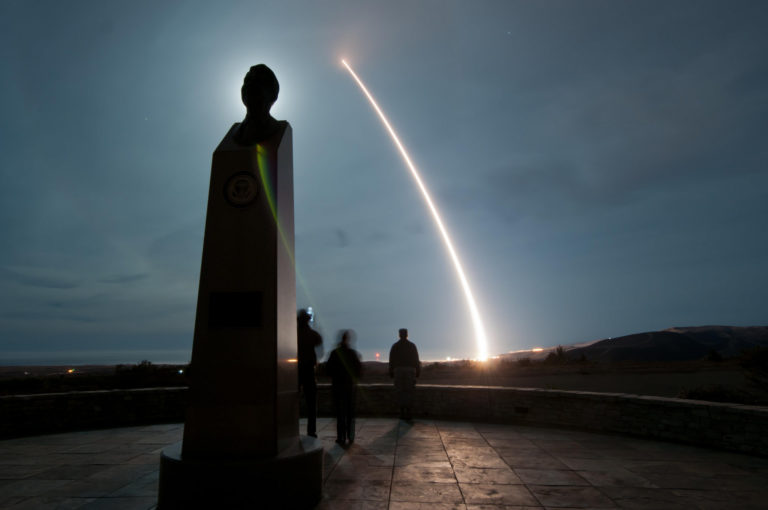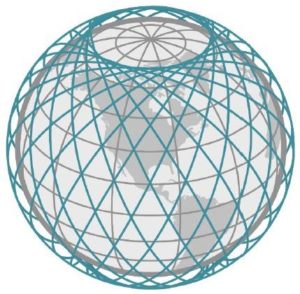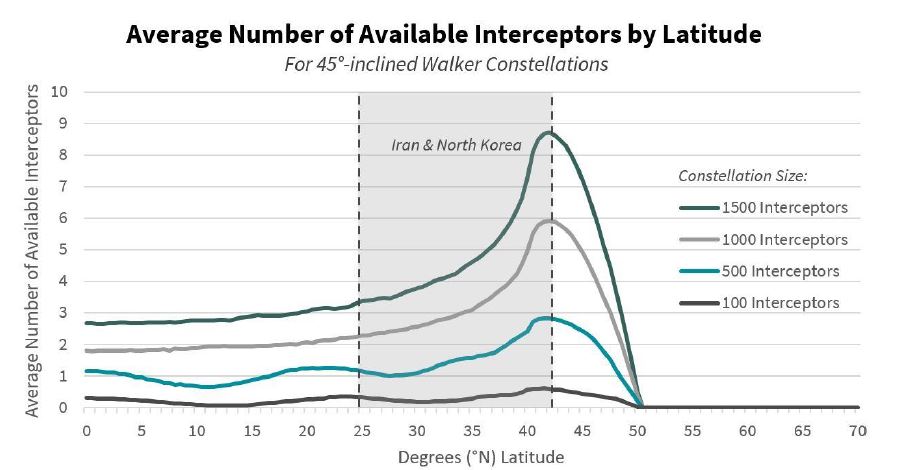Bad Idea: Space-Based Missile Interceptors

After its characteristic hibernation period between Republican administrations, the idea to place missile interceptors in space is back again. This idea was endearingly dubbed Brilliant Pebbles in the George H.W. Bush administration and was pursued as part of the Strategic Defense Initiative. Many researchers have commented on the troubling political consequences of a space-based missile interceptor system and the fact that such a system would be roundly regarded as overt weaponization of space. Beyond these policy arguments, space-based missile interceptors are a bad idea because of their inefficiency and vulnerability. Investments in missile defense would be better directed to other, more effective areas.
The Fiscal Year 2018 National Defense Authorization Act (NDDA) authorizes the development of “a space-based ballistic missile intercept layer” that is “capable of providing boost-phase defense” and is “regionally focused.”[1] Though defending against a missile strike during the boost-phase is generally preferred for missile defense systems, it presents the same challenge to space-based interceptors as it does for ground-based ones: having an interceptor close enough to the missile to respond when one is launched. The physics of orbital mechanics dictates that only interceptors in LEO can reach a target missile in the required response time for a boost phase intercept—about 120 and 170 seconds for solid-and liquid-propelled missiles respectively. Satellites in LEO are in constant movement over the surface of the Earth, meaning a large constellation of satellites is needed to ensure at least one is within range of a particular place on Earth at all times. While satellites in geostationary orbit (GEO) stay fixed over one area, at an altitude of more than 22,000 miles, they are simply too far away for an interceptor to reach a missile while it’s still in boost-phase.

A constellation of space-based missile interceptors would need to be configured in an orientation that maximizes ground coverage, like the one used by GPS satellites, known as a Walker constellation.[2] Walker constellations create a net of overlapping orbits that provide continuous or near-continuous ground coverage as shown in Figure 1. Such a configuration is symmetric across the equator, meaning there’s equal coverage of the north and south hemispheres, and rotationally symmetric, meaning that all points on Earth of equal latitude receive equal coverage. A constellation that’s “regionally focused” on Iran and North Korea, could be oriented to maximize coverage for the regions between 25°N (the latitude of the Iran’s southern border) and 42.5°N (the latitude of North Korea’s northern border). Such a constellation would provide some coverage of China but little coverage of Russia. Because Walker constellations are symmetrical above and below the equator, an Iran- and North Korea-focused constellation would also provide a similar level of coverage for the region between 25°S and 42.5°S (places like South Africa, Argentina, and southern Australia). While Iran and North Korea together comprise only 0.3% of the Earth’s surface, the constellation design that “focuses” on the two countries would necessarily cover 25.4% of the Earth—that’s a lot of extraneous defense. A standard configuration of space-based interceptors, like the one described above, would be less “regionally focused” than the phrase may imply.
To defend against multiple missiles being launched at the same time—a salvo attack—several interceptors must be within intercept range to provide effective coverage. Having a minimum of one interceptor available to strike a missile would require a constellation made up of hundreds of space-based interceptors, with the exact number depending on the capabilities assumed for the interceptors. Having multiple interceptors in position to defend against multiple missiles would require thousands of interceptors in orbit. A 2004 study by the American Physical Society suggested that 1,646 satellites would be required for effective, full-Earth coverage. The procurement cost of such a system, not including development, test, operations, and sustainment, is estimated at $67-109 billion.[3]

There are several factors that determine the efficacy of a space-based interceptor, including its maximum acceleration out of orbit, its top speed, and the maximum response time (which depends in part on whether it’s intercepting a liquid- or solid-fueled missile). Interceptors could be designed with greater functionality—better maneuverability and faster travel times—to reduce the number of interceptors required, but more capable interceptors require more fuel, and weigh more, offsetting the savings from fewer interceptors with higher launch costs.
Another inherent weakness of a space-based missile interceptor system is that the use of even a single interceptor can undermine the effectiveness of the remaining interceptors. When an interceptor is used, it opens a gap in the orbital constellation where the interceptor once was, which then orbits the Earth in the same way as any other satellite in the constellation. An adversary could both launch a missile to create a gap and later launch a second missile through the gap. Repairing gaps in coverage would require back-up interceptors in orbit, waiting to take the place of an expended one, or the ability to launch new interceptors with short notice—both of which would require a substantially greater investment than a minimal satellite constellation and still require some time before full coverage is restored.
Space-based interceptors could contribute to the greater missile defense complex by “thinning the herd” in a ballistic missile attack, but the physical constraints inherent to a boost phase intercept from orbit make it an impractical system to efficiently defend the United States and its allies. Investments in missile defense would be better spent on adding a space-layer for tracking and target discrimination or additional land- and sea-based interceptors. The Outer Space Treaty does not prohibit placing conventional weapons like missile interceptors in space, as it does for nuclear weapons and weapons of mass destruction in general. But the fact that it is not prohibited does not make it a good idea.[4]
Footnotes
[1] Conference Report to Accompany H.R. 2810, 115th Cong., 1281 (2017). [2] J. G. Walker, “Satellite Constellations,” Journal of the British Interplanetary Society 37 (1984): 559-571; A. H. Ballard, “Rosette Constellation of Earth Satellites,” IEEE Transactions on Aerospace and Electronic Systems AES-16, no. 5 (September 1980): 656-673; L. Rider, “Optimized Polar Orbit Constellations for Redundant Earth Coverage,” Journal of the Astronautical Sciences 33 (June 1985): 147-161. [3] Todd Harrison, Andrew Hunter, Kaitlyn Johnson and Thomas G. Roberts, Implications of Ultra-Low-Cost Access to Space (Washington D.C.: Center for Strategic and International Studies, 2017), https://aerospace.csis.org/implications-ultra-low-cost-access-space/. [4] United Nations Office for Outer Space Affairs, “Treaty on Principles Governing the Activities of States in the Exploration and Use of Outer Space, including the Moon and Other Celestial Bodies,” (January 27, 1967), http://www.unoosa.org/oosa/en/ourwork/spacelaw/treaties/outerspacetreaty.htmlThis report is produced by the Center for Strategic and International Studies (CSIS), a private, tax-exempt institution focusing on international public policy issues. Its research is nonpartisan and nonproprietary. CSIS does not take specific policy positions. Accordingly, all views, positions, and conclusions expressed in this publication should be understood to be solely those of the author(s).
© 2017 by the Center for Strategic and International Studies. All rights reserved.
(Photo by U.S. Air Force/ U.S. Government Work)

